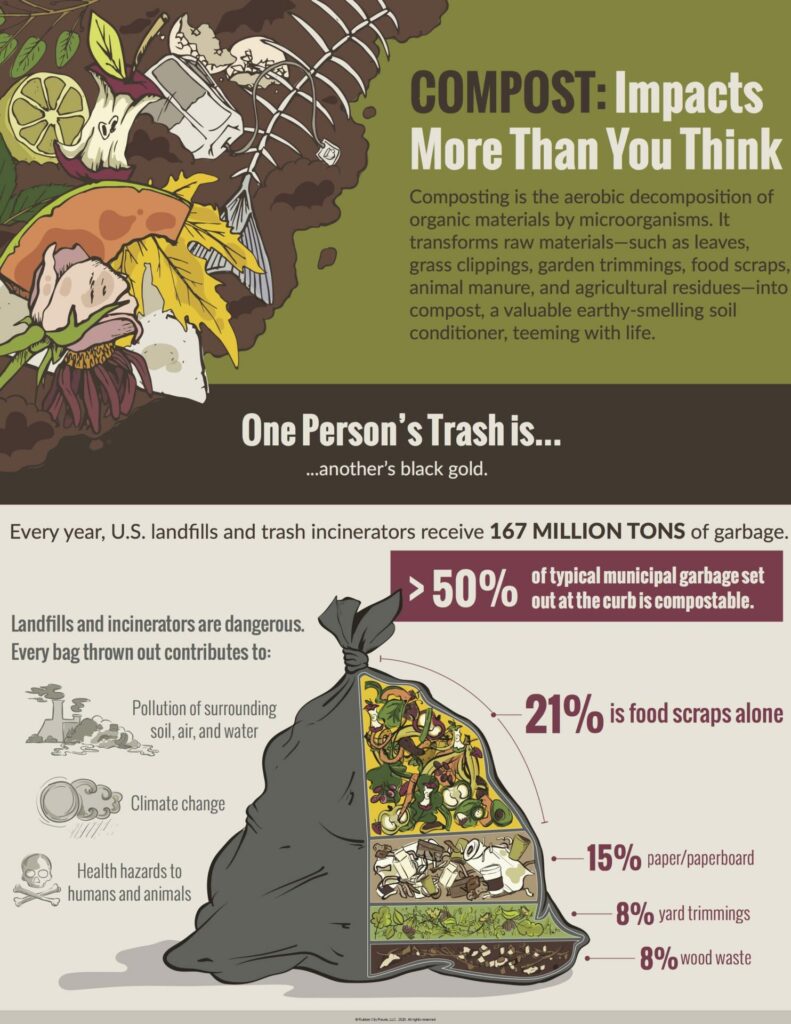By: Benjamin McMillan, Owner, Rubber City Reuse
We have all heard of composting, but we probably don’t understand the importance. According to the United States Environmental Protection Agency, food scraps and yard waste together currently make up more than 30% of what we throw away. These items could be composted instead to keep them out of landfills where they take up space and release methane, a potent greenhouse gas.*

Give Composting A Try
Composting is a good environmental practice and it’s an inexpensive way of adding nutrients back into the soil. When we apply compost to soil it increases soil resiliency to extreme heat and flooding, grows healthier plants as well as food, reduces use of synthetic nitrogen or fossil-fuel-intensive fertilizers and increases soil aggregation, which helps prevent erosion.
How To Start
Supplies Needed:
• Compost bin or outdoor area
• Shovel
• Pitchfork
• Kitchen food scrap holding pail
• Thermometer
• Organic Material such as yard waste, food scraps and shredded paper
• A compost activator including urea, manure or bone meal to help the compost process start quickly
Outdoor Compost Pile:
• Select a sunny area (in our Ohio climate, other climates recommend shade).
• Place several inches of base material such as chopped brush, twigs or wood chips on the ground. This
will allow air circulation around the base of the pile.
• Alternate green organic material containing nitrogen and brown organic material containing carbon as
you build the pile. Keep a ratio of 1-part green (vegetables, fruits, flowers, plant clippings, grass
clippings, coffee grinds, manure, etc.) and 2 to 3 parts brown (dead leaves, straw, sawdust, wood chips,
shredded newspaper, corn stalks, cotton rags, nut shells, pine needles, etc.) Do not compact layers to
allow for air circulation.
• Add several full shovels of an activator (aged compost or garden soil) as the pile is being built to
introduce microorganisms.
• Stir pile.
• Water the pile to its moist, but not wet.
For full details making your own compost pile, download your copy of the At Home Composting Guide:
The composting process will take six months or longer in the Northeast Ohio climate before it is ready for use. Compost is ready when it has decomposed into small, crumbly, dark brown soil-like particles.
Next month we will cover maintaining your compost pile and problem solving.
*United States Environmental Protection Agency website https://www.epa.gov/recycle/composting-home





